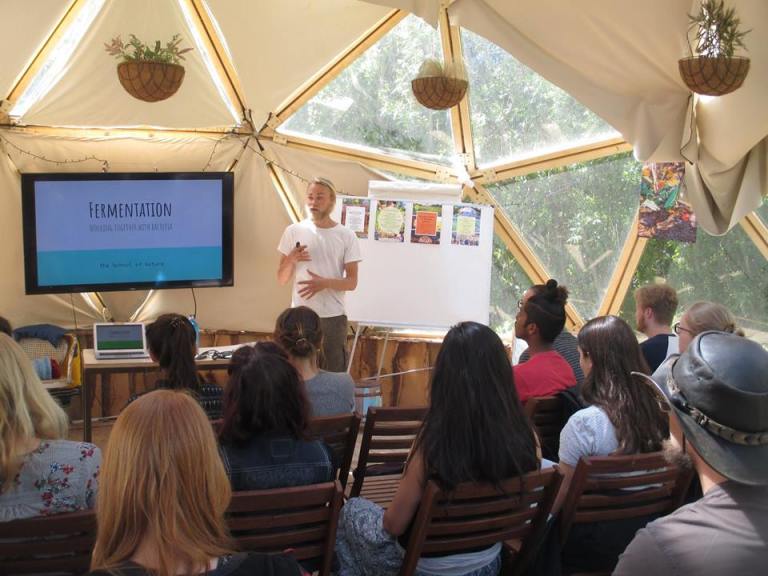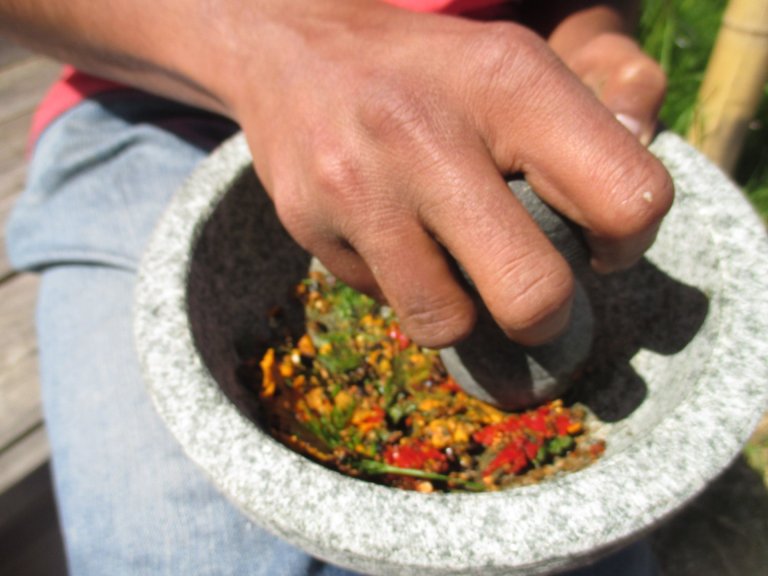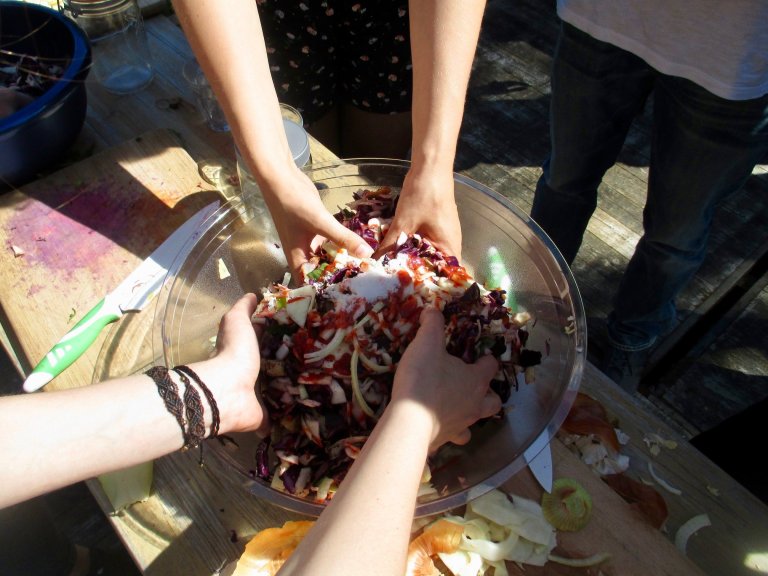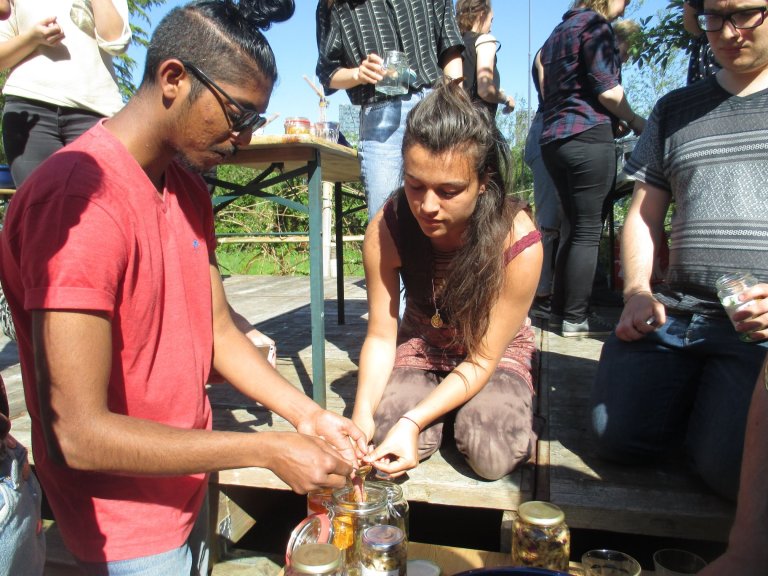Friday 4th May 2018
We had been very lucky to have warm Fridays for every workshop. Last Friday (the 27th of April) was a (cold) King’s day and we were off. 4th of May, however, was a nice sunny day and we began with some veggie snacks.
Aveen introduced us to Baastian and Jurien from The school of nature. Baastian presented the process of Fermentations and convinced us how we have to work with Bacteria and not against them. Apparently, we have more Bacteria cells than human cells in our bodies.
Why should we ferment ? (shamelessly copied from the slides of Baastian)
- 80% of our immune system is located in guts.
- Bacterial imbalance gives rise to more than 40 modern day diseases.
- Gut bacteria produce 95% of serotonin hormone which fights against depression.
- Gut bacteria decide craving of food (and indirectly obesity).
Eating fermented food creates a diversity of (good) bacteria in the body which is good for our immunity and health.

Wild Fermentation VS Cultured Fermentation
Wild fermentation uses local bacteria and is spontaneous. Examples of food that are made using wild fermentation are: Sauerkraut, kimchi, honey mead, pickes!
Cultured fermentation uses a starter (a culture of bacteria) to start fermentation. Examples are Yogurt, kombucha, sourdough.
Workshop
We paired up with each other and started following the procedure for making Sauerkraut:
Steps for Making Sauerkraut:
- Cut veggies (mainly cabbage): Smaller the pieces are, faster the fermentation.
- Add spices & herbs (ginger, garlic, caraway, peppers, turmeric, chilly).
- Salt the mixture
- Dry method : Just add salt and through the process of osmosis, brine is created
- Brine method : Add water with salt (3 teaspoons salt for 1L)
- Pack tightly in the jar, veggies completely submerged (oxygen free environment)
Cutting the cabbage was an easy part. We also added other veggies like onion, red cabbage and some leaves like mint, basil. and Real fun was to make spice mix and then squeezing the mixture by hand after adding salts.

Our hands were dirty and we could make many dirty jokes about shaking and squeezing and other verbs that have double meaning. Squeezing all veggies was like doing meditation.

In the break, we devoured vegan pittas made by Aveen and her team of volunteers.
After the break, Baastian described how to make Honey mead which was comparatively shorter process. But it stuck to our mind because it was very sticky! The honey!
Making Honey mead : Honey + water + herbs + Stir twice a day for at least two weeks!

(… to be continued)
